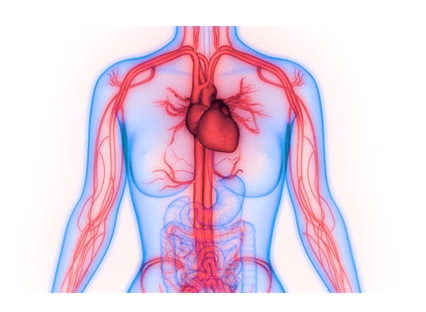
Aortic Aneurysm. Can you live with that?

Despite the fact that aneurysms cause more than 25,000 fatalities in the United States each year, it is possible to live with and treat an aortic aneurysm.
The aorta is your body's principal artery for moving blood away from your heart — it's the highway that distributes oxygen-rich blood. When the wall of an artery weakens, it bulges or dilates abnormally, creating an aneurysm. The aortic wall is stretched and weakened as blood flows through it, and high blood pressure adds to the tension, producing a rupture.
However, early detection is critical. You can help avoid, detect, and manage an aortic aneurysm if you have the correct knowledge.
The following are the two forms of aortic aneurysms:
The most frequent kind of aortic aneurysm is an abdominal aneurysm, which occurs when the aorta weakens due to high blood pressure. This weakness can result in a burst vascular, resulting in internal bleeding below the diaphragm.
Thoracic: A thoracic aneurysm is a hard-to-detect aortic aneurysm that arises in the portion of the aorta that passes through your chest cavity. Aneurysms form over time, and while the dilatation isn't dangerous in and of itself, a burst artery can cause life-threatening internal bleeding.
Early signs of aortic aneurysms are typically absent, making them difficult to detect. Symptoms do not occur until the blood vessel ruptures.
Whether you have a family history of aortic aneurysms, your cardiologist may do a screening to see if you have one. Aortic deficiencies, on the other hand, are usually identified during routine physical examinations and testing for other problems. A variety of tests can be used to detect an aortic aneurysm.
Until the aneurysm tears or ruptures, most aneurysms have minimal warning symptoms. When this happens, the following symptoms may appear:
- Pain in the chest, abdomen, back, neck, or jaw
- Skin that is clammy
- Breathing problems
- Dizziness
- Fainting
- You're experiencing weakness on one side of your body.
- throat that is hoarse
- Nausea/vomiting
Aortic aneurysms might be mistaken for heart attack symptoms. If you see any of these warning signals, you should get medical help right once.
The practice of monitoring an aneurysm over time is known as "watchful waiting." Cardiologists use a variety of imaging techniques to monitor an aneurysm's size and progression.
You may be a candidate for careful waiting if you have a family history of aneurysms. If you have any of the following, you may be on the lookout:
- Diseases of the connective tissues caused by genetic mutations
- Blood pressure that is too high
- Atherosclerosis or high cholesterol (build-up of plaque)
If you have an aortic aneurysm, work with your doctor to ensure adequate monitoring and be aware of any changes in your condition. Changing your living choices can have a good and long-term impact. Prescription medicines, such as beta blockers, can potentially lower your chance of developing an aortic aneurysm.
We are just a call or click away. To learn more, book an appointment online or over the phone with PeachState Advanced Cardiac & Endovascular. We have several locations in Georgia: Newnan, Atlanta, & Griffin.
You Might Also Enjoy...


Feeling Faint

Should I be worried about my numb feet?

Can leg cramps be a sign of something serious?

Meet Dr. Odiete - PACE Cardiovascular Specilaist


